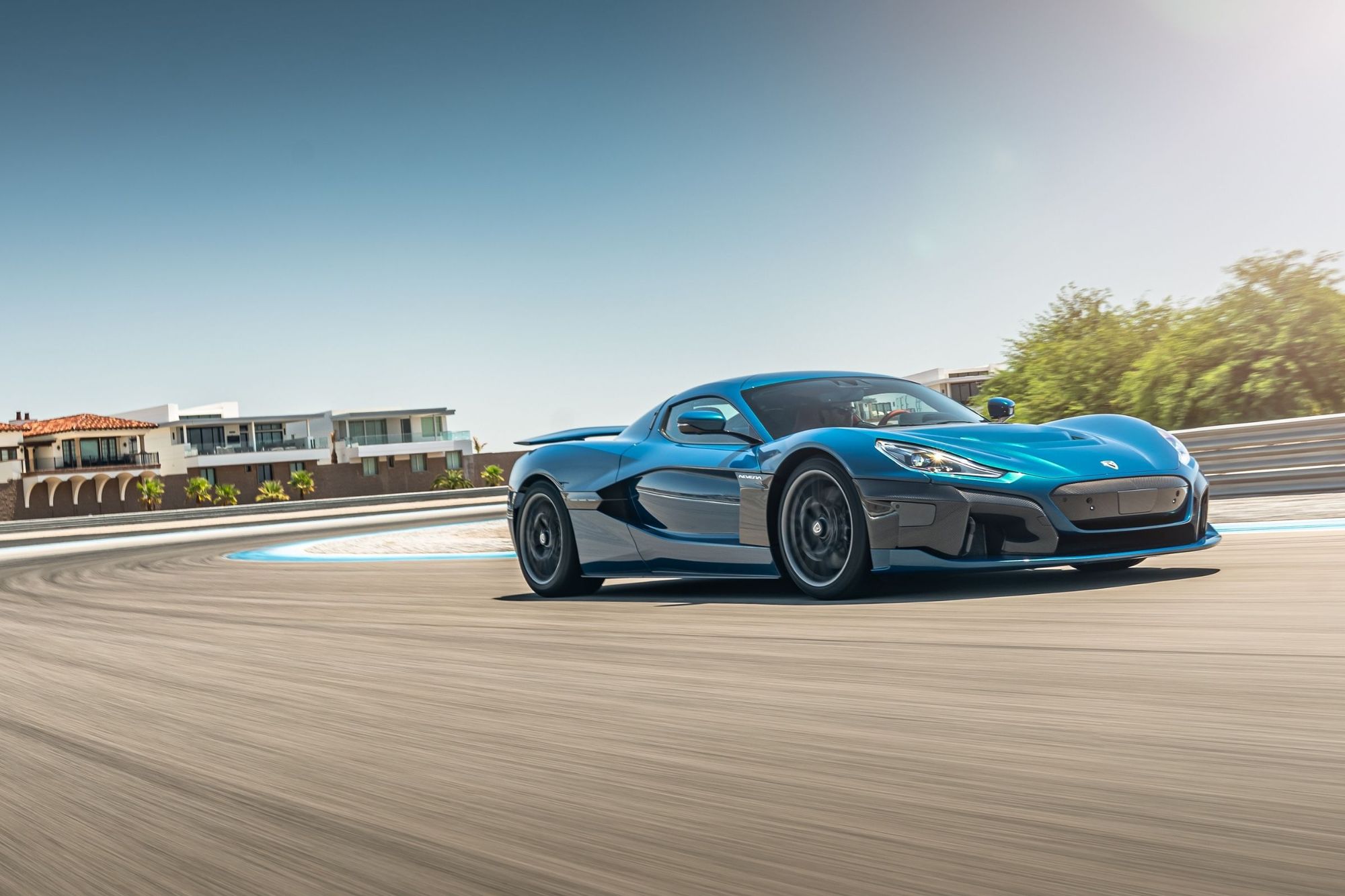‘Game changer’. It’s a phrase that’s thrown around like guacamole at a Mexican buffet.
It seems that every flashy, new million-horsepower supercar is declared a ‘game changer’ by the motoring media. However, the reality is that this is often a gross exaggeration.
Rimac’s new Nevera hypercar is different, though. Promise.

Let me guess. It’s electric.
Bingo.
The Nevera employs a 120kWh battery that is capable of producing up to 1914 hp (1408kW) and 2360 Nm of motor torque. Power is distributed to each wheel via four independent permanent-magnet electric motors.
Incredibly, Rimac claims the Nevera’s electric motors are 97% efficient, meaning that 97% of the energy in the car’s battery is translated into motion (rather than heat, noise, etc). For perspective, the most efficient internal combustion engines struggle to achieve 50% efficiency.

Impressive. How’s the range?
Preliminary testing suggests the Nevera is capable of travelling an impressive 550km on a single charge (WTLP range estimate).
Is it heavy?
Very. The Nevera hits the scales at a whopping 2150 kg.
I dropped out of school in year 5. Use a tangible metaphor.
*Sigh*
The Nevera is about as heavy as 20 baby elephants.
Yikes. That’s gotta hurt.
Perhaps, but the Nevera is far from a loose bucket of slush.
The Nevera’s carbon/aluminium monocoque weighs less than 200kg and yet has a torsional stiffness of 70.000 Nm/degree. In other words: the Nevera has the most rigid structure of any car ever made.

I’m not convinced by the looks.
Neither am I.
To my eyes at least, the design is forgettable. There isn’t a single angle that sparks butterflies in my stomach. In fact, it’s almost forgettable.
It’s not unattractive, per se, it just lacks the elusive-yet-undeniable X-factor we’ve come to expect of cars costing more than AUD$3 million (approx £1.7m).
You are being polite.
You’re right.
The front is hideous, though it’s hard to pinpoint exactly why.

I’m sure you could give it a shot.
The faux grille is the first design element that comes to mind. It’s a blacked-out unit that gives the Nevera a face like a carbon fibre cod.
The slightly droopy headlights aren’t particularly spectacular either.
What is it like inside?
Clean. Clinical. And, dare I say it, dull.
The material quality is superb, nonetheless, you get the sense that the Nevera was designed by engineers. Everything is functional if a little too pragmatic.
Moreover, while I commend Rimac for opting against a needlessly complicated cockpit (I am looking at you, Pagani), I hate that they have relied on a touchscreen to do so. I have said it before and I will say it again: touchscreens have no place in supercars. They date interiors depressingly quickly and are a lazy solution to the button apocalypse of the early 2000s.



Sounds like the Nevera is a classic case of all go and no show.
The Nevera is phenomenally quick. Almost incomprehensibly so.
How fast are we talking?
You may want to sit down for this.
The Nevera’s top speed – 412km/h – is its least extraordinary performance claim. Let that sink in.
Rimac claims the Nevera can explode from 0-100km/h in 1.97 seconds. One point nine-seven seconds. Ladies and gentlemen, we have officially shattered the two-second barrier. 0-300 km/h takes just 9.3 seconds (more than three seconds quicker than a Chiron Pur Sport) and the quarter-mile is crossed in 8.6 seconds.
*Faints*
Astonishing, isn’t it?

Have we reached ‘peak car’?
There exist people in the automotive community – let us call them ‘joy killers’ – who argue that breakneck acceleration and top speed figures are irrelevant.
These same people would no doubt contend that the Rimac Nevera is too powerful, too quick, and too fast.
These people are idiots.
...[some people] argue that breakneck acceleration and top speed figures are irrelevant... these people are idiots.
One of humanity’s defining characteristics is its desire and ability to innovate. Time and time again, despite seemingly impossible odds, humanity manages to surpass itself and does something marvellous.

We seem to have an inclination, an incessant drive, to outdo ourselves and transcend our previous endeavours. Perhaps the most salient manifestation of this can be seen in the realm of space exploration. The same spirit that landed us on the moon is now driving us to inhabit Mars.
There is no such thing as ‘too fast’ when it comes to hypercars. Calling a hypercar ‘too fast’ is akin to calling an olympic powerlifter ‘too strong’ or a sprinter ‘too quick’. Hypercars exist to push the performance envelope. They are engineering marvels designed to showcase what is possible when you have a seemingly infinite budget and access to the brightest engineers on the planet.
I may not lust for the Nevera like I do for Ferrari’s SP2 or Porsche’s new GT3 Touring, but it matters not. Rimac should be applauded for what they have accomplished with the Nevera, irregardless.
The latest and greatest in a long line of game-changing hypercars, the Nevera is proof that the future of performance cars is bright.







